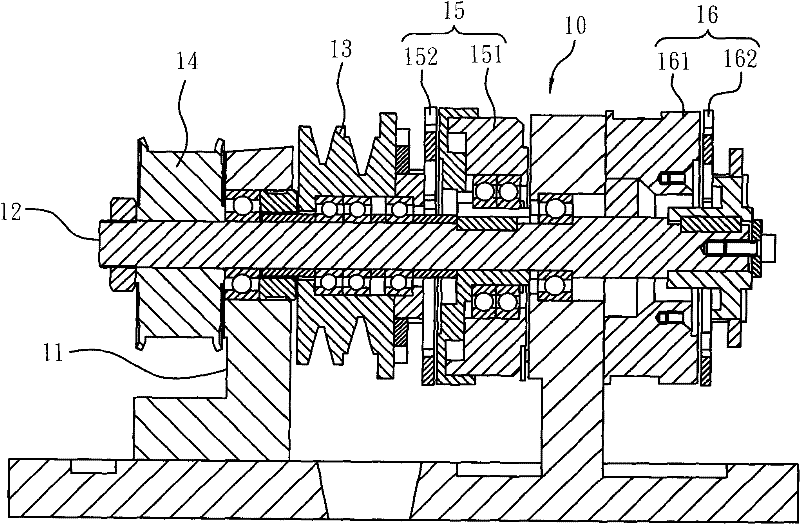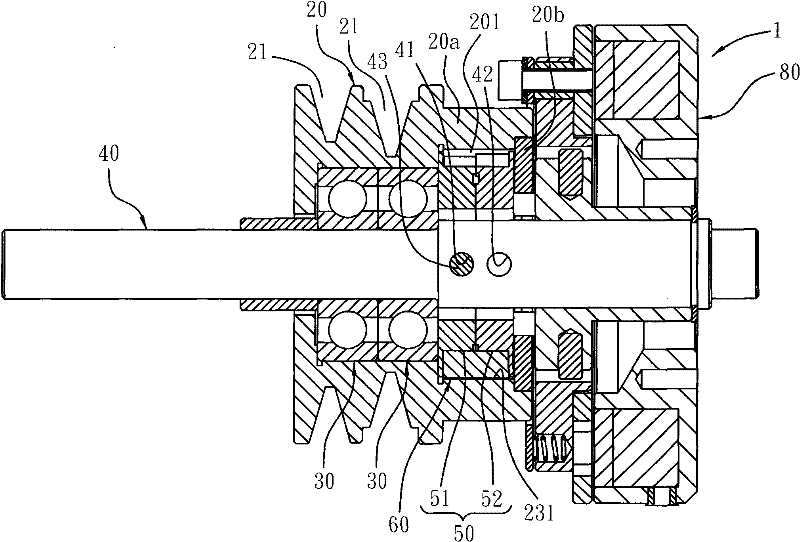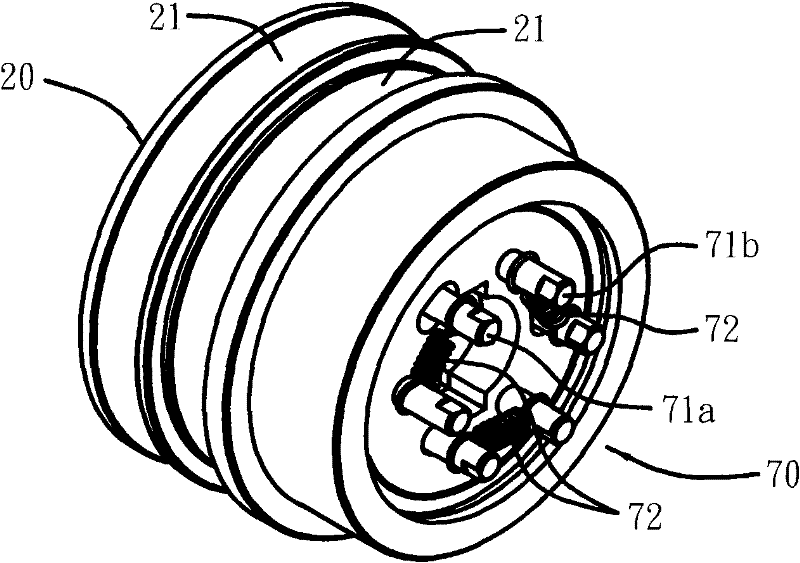Brake clutch
A clutch device and clutch technology, applied in the field of clutches, can solve the problems that affect the processing quality, trouble equipment manufacturers and operators, and the depth of tapping or drilling cannot be accurately controlled.
- Summary
- Abstract
- Description
- Claims
- Application Information
AI Technical Summary
Problems solved by technology
Method used
Image
Examples
Embodiment Construction
[0080] see Figure 2 to Figure 5 As shown, the present invention is a first embodiment of a brake and clutch device. The brake and clutch device 1 mainly includes a wheel-shaped transmission part 20, two bearings 30, a shaft-shaped transmission part 40, two ratchet assemblies 50, and a plurality of engaging parts. Column 60, an occlusal column push-out device 70, and a ratchet brake device 80; the following is a separate description of the above-mentioned components.
[0081] Regarding the wheel-shaped transmission member 20, it mainly includes a body 20a and a limiting ring 20b; wherein:
[0082] The main body 20a is a pulley in this embodiment, and its outer peripheral wall is provided with two pulley grooves 21, which can be driven by a belt driven by a motor; one end side of the main body 20a is provided with a screw hole 22, and the screw hole 22 A circular groove 23 is recessed in the center of the bottom wall of the hole, and a bearing accommodation groove 24 is recess...
PUM
 Login to View More
Login to View More Abstract
Description
Claims
Application Information
 Login to View More
Login to View More - R&D
- Intellectual Property
- Life Sciences
- Materials
- Tech Scout
- Unparalleled Data Quality
- Higher Quality Content
- 60% Fewer Hallucinations
Browse by: Latest US Patents, China's latest patents, Technical Efficacy Thesaurus, Application Domain, Technology Topic, Popular Technical Reports.
© 2025 PatSnap. All rights reserved.Legal|Privacy policy|Modern Slavery Act Transparency Statement|Sitemap|About US| Contact US: help@patsnap.com



